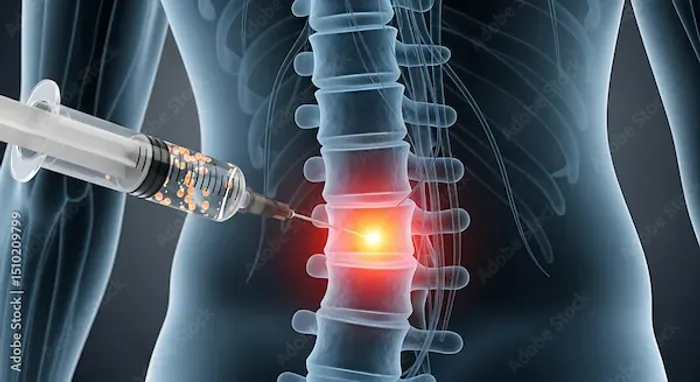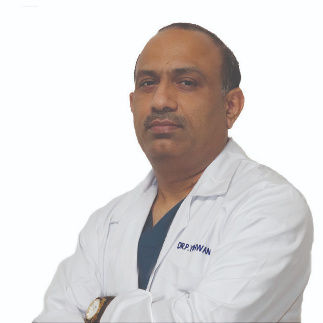Understanding Spinal Cord Injury Healing, Current Treatment Strategies and Advancements.
Learn more about spinal cord injury (SCI), its causes, and the complexities of spinal cord injury healing. Understand the possibility of healing SCI and the latest advancements in medical research.

Written by Dr. Sonia Bhatt
Last updated on 3rd Jul, 2025

Introduction
The spinal cord is a vital structure composed of nerve cells and pathways responsible for transmitting signals between the brain and the rest of the body. It is protected by the vertebrae and surrounded by cerebrospinal fluid, which acts as a cushion against trauma. The spinal cord consists of different regions, including the cervical, lumbar, thoracic, sacral, and coccygeal sections, each of which controls various functions. Spinal cord injury (SCI) refers to damage to the spinal cord resulting from trauma. For example, from falls and road traffic injuries or non-traumatic causes like degenerative and vascular conditions, tumours, toxins, infections or congenital disabilities. Spinal cord injuries can be severe and also life-altering conditions resulting from damage to the spinal cord. This may lead to partial or complete loss of motor and sensory functions below the injury site.
Normal Functions of the Spinal Cord
Below are a few normal functions of the spinal cord:
Sensory Function: This function helps in transmitting sensory information from the body to the brain.
Motor Function: This function helps in controlling voluntary muscle movement.
Autonomic Function: This function helps in regulating involuntary functions like heart rate and digestion.
Damage to the spinal cord may disrupt these functions, which may lead to paralysis, loss of sensation, and autonomic dysfunction. In some cases, SCI may cause chronic pain and spasticity, further impacting daily life.
Types of Spinal Cord Injuries
There are two types of spinal cord injuries, as mentioned below:
Traumatic SCI: It is caused by sudden impacts such as falls, car accidents or sports injuries.
Non-traumatic SCI: It results from medical conditions such as tumours, infections and degenerative diseases.
Signs and Symptoms
Depending on the severity and location of the injury, people with SCI can experience:
Bowel, bladder and sexual dysfunction.
Dysregulation of blood pressure, heart rate, and/or body temperature.
Partial or complete loss of sensory and/or motor functions (including respiratory muscle functions).
Spinal cord injury is also often associated with a risk of developing complications, including debilitating and potentially life-threatening secondary conditions such as:
Urinary tract infections
Deep vein thrombosis
Osteoporosis
Respiratory complications
Spasticity
Chronic pain
Pressure ulcers
Autonomic dysreflexia
People with SCI, furthermore, may also develop clinical signs of depression, which may lead to negatively impacting functional improvements and overall health.
Common Causes of Spinal Cord Injury
Spinal cord injuries may be caused by damage to the vertebrae, ligaments, discs, or the spinal cord itself. Accidents or physical assaults may dislocate, fracture, or crush the vertebrae protecting the spinal cord, resulting in a traumatic injury. The spinal cord may also be damaged due to prolonged and untreated swelling, fluid accumulation, and bleeding in and around it. It can be damaged due to diseases like arthritis, cancer, inflammation, and infection of discs.
Below are some of the most common causes:
Falls are considered the most common cause of spinal cord injury in adults over 65 years of age.
Accidents may lead to a significant number of cases of spinal cord injuries.
Gunshot wounds and acts of violence can lead to SCIs.
Alcohol abuse may also play a role in spinal injury.
Diseases like arthritis, cancer, osteoporosis, and inflammation can cause long-term injury to the spinal cord.
Importance of Understanding Spinal Cord Injury Healing Process
Understanding the mechanisms of spinal cord healing is crucial for both patients and healthcare professionals. Though a complete cure remains elusive, medical advancements continue to improve recovery outcomes, enhance quality of life, and offer hope for better treatments in the future. Understanding the SCI healing process is essential because it allows healthcare professionals to develop targeted treatment strategies, manage secondary complications, optimise rehabilitation plans, and provide realistic expectations to patients regarding potential recovery.
Possibility of Healing a Spinal Cord Injury
Traumatic spinal cord injuries may be the most challenging to heal because the damaged cells face anatomical, physiological, chemical and immune system changes that may prevent them from regenerating. Though there are no specific treatments available to heal traumatic spinal cord injuries, researchers have been trying to develop a treatment. However, physiotherapy and rehabilitation have helped many people with a traumatic spinal cord injury lead a happy life.
Current Treatment Strategies
There are two primary types: Acute and long-term injury management approaches.
1. Acute Injury Management
Acute spinal cord injury management primarily focuses on immediate stabilisation. Key aspects include:
Steroid Therapy: High-dose corticosteroids, such as methylprednisolone, may be used within the first few hours after injury to reduce inflammation and limit secondary damage.
Immobilisation: It helps prevent further spinal damage and ensures stability. Some techniques include spinal boards, cervical collars, and traction devices.
Surgical Intervention: Procedures like decompression surgery relieve pressure on the spinal cord, while spinal fusion stabilises fractured vertebrae and prevents further injury.
2. Long-Term Rehabilitation Approaches
Long-term rehabilitation is crucial for maximising recovery and improving the quality of life for SCI patients. It typically focuses on:
Occupational Therapy: It teaches patients new ways to perform daily tasks using adaptive techniques. It also uses assistive devices such as orthotic braces, wheelchairs, and robotic exoskeletons to enhance mobility and independence.
Physical Therapy and Exercise Rehabilitation: This includes strength training, which helps maintain muscle function and prevent atrophy. Range-of-motion exercises help reduce stiffness and improve mobility. Functional Electrical Stimulation (FES) uses electrical pulses to stimulate muscle movement in paralysed limbs, helping regain motor function.
Respiratory Therapy: It includes ventilator support for those with high-level injuries affecting the diaphragm. With breathing exercises, patients can strengthen respiratory muscles and improve lung function. Cough assist devices help in clearing mucus buildup in patients with weak coughing reflexes.
Bladder and Bowel Management: Intermittent catheterisation may help prevent urinary retention and infections. Dietary adjustments, laxatives, and digital stimulation are crucial for maintaining regular function.
Pain and Spasticity Management: Medications including muscle relaxants (baclofen, tizanidine) and nerve pain treatments like gabapentin and pregabalin can be given. Botulinum toxin injections can help reduce muscle spasticity in affected areas. Massage therapy and stretching exercises can help relieve muscle tension and discomfort.
Emotional and Psychological Support: Cognitive behavioural therapy (CBT) can help patients cope with anxiety, depression, and PTSD following SCI. They can seek emotional support from peer support groups and opt for family counselling that may help the relatives understand and adapt to the patient’s needs.
Advancements in SCI Healing and Research
There are a few advances in the direction of SCI healing, which include:
1. Stem Cell Therapy
Research explores using stem cells to regenerate damaged nerve tissue and promote functional recovery. A few clinical trials show promising results; however, widespread application remains under study.
2. Biomaterials and Scaffolding in SCI Repair
Scientists are developing biocompatible scaffolds to support nerve regeneration. These scaffolds help bridge the damaged areas and encourage axonal growth.
3. Role of Physical Therapy in SCI Recovery
It is important to understand about physical therapy for recovering from spinal cord injuries. Physical Therapy is crucial in preventing muscle atrophy and maintaining joint mobility. Early intervention can help retrain the nervous system and optimise function.
Conclusion
While SCI presents significant challenges, ongoing medical research continues to improve treatment and recovery prospects. Though a complete cure remains elusive, the combination of rehabilitation, assistive technologies, and emerging therapies is significantly enhancing the quality of life for patients.
Consult Top Orthopaedician
Consult Top Orthopaedician

Dr. Manoj Dinkar
Orthopaedician
15 Years • MBBS, Dip (Orthopaedics)
New Delhi
THE DOCTORS NESST, New Delhi

Dr. Prashant Kumar
Orthopaedician
9 Years • MBBS,MS Orthopaedics, DNB Orthopaedics
Kolkata
Doctor's World, Kolkata

Dr. Keshav Digga
Orthopaedician
14 Years • MBBS, MS Orthopaedics, FIASM, FIMISS
Kolkata
DIGGA HEALTHCARE, Kolkata

Dr. Anil Pradeep Jadhav
Orthopaedician
23 Years • MBBS MS (Ortho)
Nashik
Apollo Hospitals Nashik, Nashik
(25+ Patients)

Dr. Bhanu Prakash Reddy Rachamallu
Orthopaedician
24 Years • MBBS , D'ORTHO, DNB (ORTHO), Mch (ORTHO), Fellow in ARTHROPLASTY
Hyderabad
Apollo Hospitals Jubilee Hills, Hyderabad
(75+ Patients)
